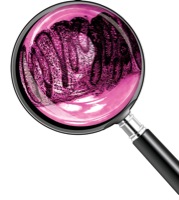 Chicago—After the American Society for Gastrointestinal Endoscopy (ASGE) released a key position statement in March, the concept of voluntarily not submitting certain diminutive colon polyps to histopathology took one step closer to becoming clinical practice, moving from academic centers to community endoscopy suites.
Chicago—After the American Society for Gastrointestinal Endoscopy (ASGE) released a key position statement in March, the concept of voluntarily not submitting certain diminutive colon polyps to histopathology took one step closer to becoming clinical practice, moving from academic centers to community endoscopy suites.The ASGE’s position paper, “Preservation and Incorporation of Valuable Endoscopic Innovations (PIVI) on Real-time Endoscopic Assessment of the Histology of Diminutive Colorectal Polyps,” establishes a priori diagnostic and/or therapeutic thresholds for endoscopic technologies that will allow endoscopists to better determine which polyps pose a risk to patients (Rex DK et al. Gastrointest Endosc 2011;73:419-422).
The document states that provided a technology is 90% accurate in predicting surveillance intervals compared with standard histopathology, endoscopists can “resect and discard” polyps that are less than 5 mm based on their real-time assessment of histology. Alternatively, endoscopists can choose to leave suspected rectosigmoid hyperplastic polyps that are less than 5 mm in place.
“The general approach taken by the ASGE is that if a given technology meets the criteria with regard to performance, then the ASGE would endorse it,” explained Douglas Rex, MD, professor of medicine and director of endoscopy at Indiana University, in Indianapolis, who is first author of the ASGE position statement and chair of the PIVI committee.
Real-time Technologies in the Running
There are many ways to classify the available technologies for real-time polyp histologic evaluation, but two main groups emerge. One group, called virtual histology, comprises the imaging technologies that most closely mirror an actual histopathologic analysis, including endocytoscopy and confocal laser microscopy. These are capital-intensive, small-field, difficult-to-learn technologies, and may be less likely to gain a following in the market.
 Endocytoscopy uses ultra-high magnification (450-1,125×) through a catheter-type endoscope that can be used in combination with chromoagents. Although endocytoscopy cannot reach a depth beyond superficial cell layers, it is considered virtual histology because it can provide an “optical biopsy,” similar to looking at a slide under a microscope.
Endocytoscopy uses ultra-high magnification (450-1,125×) through a catheter-type endoscope that can be used in combination with chromoagents. Although endocytoscopy cannot reach a depth beyond superficial cell layers, it is considered virtual histology because it can provide an “optical biopsy,” similar to looking at a slide under a microscope.
Confocal laser microscopy can acquire high-resolution optical images at selected depths and creates a three-dimensional reconstruction of the interior of a specimen. The technology is currently available to physicians in the United States.
“Of these technologies, [confocal laser microscopy] is the best-studied; it provides real virtual histology; and I think it’s very effective at answering the simplest question, the one that the PIVI suggests is the greatest clinical need: ‘Is a polyp an adenoma or is it hyperplastic?’ ” Dr. Rex said.
Confocal laser microscopy comes with several downsides, however. The confocal laser microscope is a separate attachment to an endoscope and is relatively expensive compared with other real-time technologies. It also requires specialized training to accurately identify polyps, and perhaps most importantly, requires the endoscopist to take additional time during the colonoscopy to assess the image and make a judgment.
“I think it’s unlikely to be taken up on a widespread basis unless there is reimbursement for it, and I don’t think the reimbursement issues are clarified well enough,” said Dr. Rex.
The second group of real-time technologies uses less expensive, easy-to-use and readily available technologies, known as large-field or “push-button.” These technologies are now standard on the latest-generation colonoscopes. The large-field technologies include narrow-band imaging (Olympus), i-Scan (Pentax) and FICE (Fuji). Although each of the technologies is different, the principle behind them is the same: By passing a number of unique, filtered wavelengths of light through tissue, the images can be reconstructed to produce clearer, more distinct pictures of the mucosal surface, particularly the vasculature. By analyzing the “pit,” or vascular patterns, of polyps, endoscopists can determine whether they pose a risk to patients.
From Academic Centers to Community Endoscopy Suites
Presently, the biggest question is whether these technologies will translate to the gastroenterology community at large.
“In academic centers or those dedicated to this kind of research, the accuracy for predicting polyp types is very good, so the next real hurdle is how to get that into the broader community where the vast majority of colonoscopies are done,” said Michael Wallace, MD, professor of medicine and director of research for medicine in the Division of Gastroenterology and Hepatology at Mayo Clinic, Jacksonville, Fla., where he studies advanced endoscopic imaging technologies.
Many of the technologies are well studied in research environments. The PIVI statement, for example, cites more than four dozen studies, most within the last 10 years, looking at the accuracy of real-time technologies. Most of the studies have demonstrated an accuracy rate in the low 90th percentile, with rates dipping slightly for push-button, filtered-light technologies and often hitting 99% in studies of confocal laser microscopy.
Although actual data are lacking on how well the technologies perform in community settings, there is evidence that at least some of the techniques can be quickly learned. In a study published last year in Gastrointestinal Endoscopy (Raghavendra M et al. 2010;72:572-576), Dr. Rex and colleagues demonstrated that “narrow-band imaging can be learned in 20 minutes” among a group of endoscopists that included medical students and fellows as well as faculty. A short teaching session describing the differences in appearance between photos of hyperplastic and adenomatous polyps increased accuracy from 47.6% to 90.8% (P=0.0001) and raised interobserver agreement to a kappa score of 0.69.
Amit Rastogi, MD, has led similar studies with fellows at the Kansas City VA Medical Center, in Kansas, the findings of which were also published in Gastrointestinal Endoscopy (Rastogi A et al. 2009;69:716-722).
“I have a feeling that community gastroenterologists can easily learn these patterns,” he said. “Can it be learned and put into practice? Yes, absolutely.”
Another important advantage to voluntarily withholding certain diminutive polyps from histopathology is the substantial savings this will allow. One study reported that if endoscopists stopped sending diminutive polyps for histopathology, the health care system would save as much as $1 billion annually, said Dr. Rastogi, director of endoscopy at the Kansas City VA Medical Center and associate professor of medicine at the University of Kansas. A more conservative estimate was $33 million annually, still a significant savings (Hassan C. Clin Gastroenterol Hepatol 2010;8:865-869).
“Although the costs [per colonoscopy] are relatively low, when you multiply them by the number [of specimens] removed and by 14 million colonoscopies, the numbers become substantial,” said Dr. Wallace. Specifically, he said, roughly 14 million colonoscopies are done annually in the country each year, and about 50% of those generate a pathology specimen.
The Final Hurdles
The large-field, push-button technologies are now standard on new colonoscopes, but real-time histologic assessment has not become standard practice. Although real-time histologic technologies seem poised for widespread adoption, there are market forces, at least on an individual level, aligning against it.
“It’s very difficult to change practice,” said Dr. Rastogi. “As colonoscopists, we are used to removing all the polyps that we detect and sending them to pathology to get a diagnosis. We were trained to do that; that’s how we think we prevent colon cancer.”
One reflection of this mindset, at least for the time being, is that a “resect and discard” approach goes against the published policies of many hospitals as well as national colonoscopy guidelines.
“A lot of hospitals have a policy that if you remove tissue you are required to send it to pathology,” said Dr. Rex.
Currently, the national guidelines suggest that all significant polyps should be removed and subjected to histologic examination, so any other approach might be considered noncompliant, Dr. Wallace added. However, if studies confirm that real-time analysis is accurate in the community setting, these published policies will likely change as the prominent gastrointestinal societies endorse the new approach.
An issue in confirming the accuracy of real-time analysis in the community setting is that in vivo assessments take time. It may not be incredibly time-consuming on a per-polyp basis, but over the course of a day of colonoscopies, it can add up.
“You’re now asking the physician to spend an extra minute or two and sometimes a little more to diagnose a polyp and make a call,” Dr. Wallace said. “Physicians are already being pushed to do everything we do faster and more efficiently, see more patients, do more procedures. And this is yet another task that is not reimbursed at all.”
A bigger challenge, perhaps, comes from fear of medicolegal problems.
“In the minds of the endoscopists, there will be a medical-legal angle to this,” Dr. Rastogi said. “What if you leave behind a polyp that you thought was hyperplastic but actually the patient goes on to develop cancer? That lurking fear in the mind of the endoscopist can be a deterrent that prevents them from adopting this [practice].”
Dr. Wallace added, “If some untoward event occurs, the patient gets cancer in the next five or 10 years, the [patient] could look back and say you didn’t follow the guidelines.”
One more financial hurdle has to do with the perceived conflict of interest among gastroenterologists who employ pathologists in their surgery centers. There is a natural incentive to generate pathology in these settings. “Although I think physicians are ethical, there is an incentive in that setting, because you’re reimbursed for the pathology costs, not to change that practice,” Dr. Wallace said.
So, with these downsides, what would motivate a busy gastroenterologist to incorporate these technologies into his or her practice?
“That’s a valid philosophical question,” said Dr. Rastogi. “There might not be any immediate gain to the endoscopist, but I think if you look at it from a broader perspective you are saving a lot of health care dollars. The main advantage is cost savings to the health care system and all of us share some responsibility for that, especially in these troubled economic times.”
Dr. Rastogi disclosed having a commercial relationship with Olympus America. Dr. Rex reported relevant financial or other commercial relationships with American BioOptics, Avantis Medical Systems, Braintree Laboratories Inc., Check-Cap, Epigenomics AG, Given Imaging, Olympus America and Softscope Medical Technologies. Dr. Wallace reported relationships with Boston Scientific, Cook Medical, Fujinon, Mauna Kea Technologies and Olympus America.

































